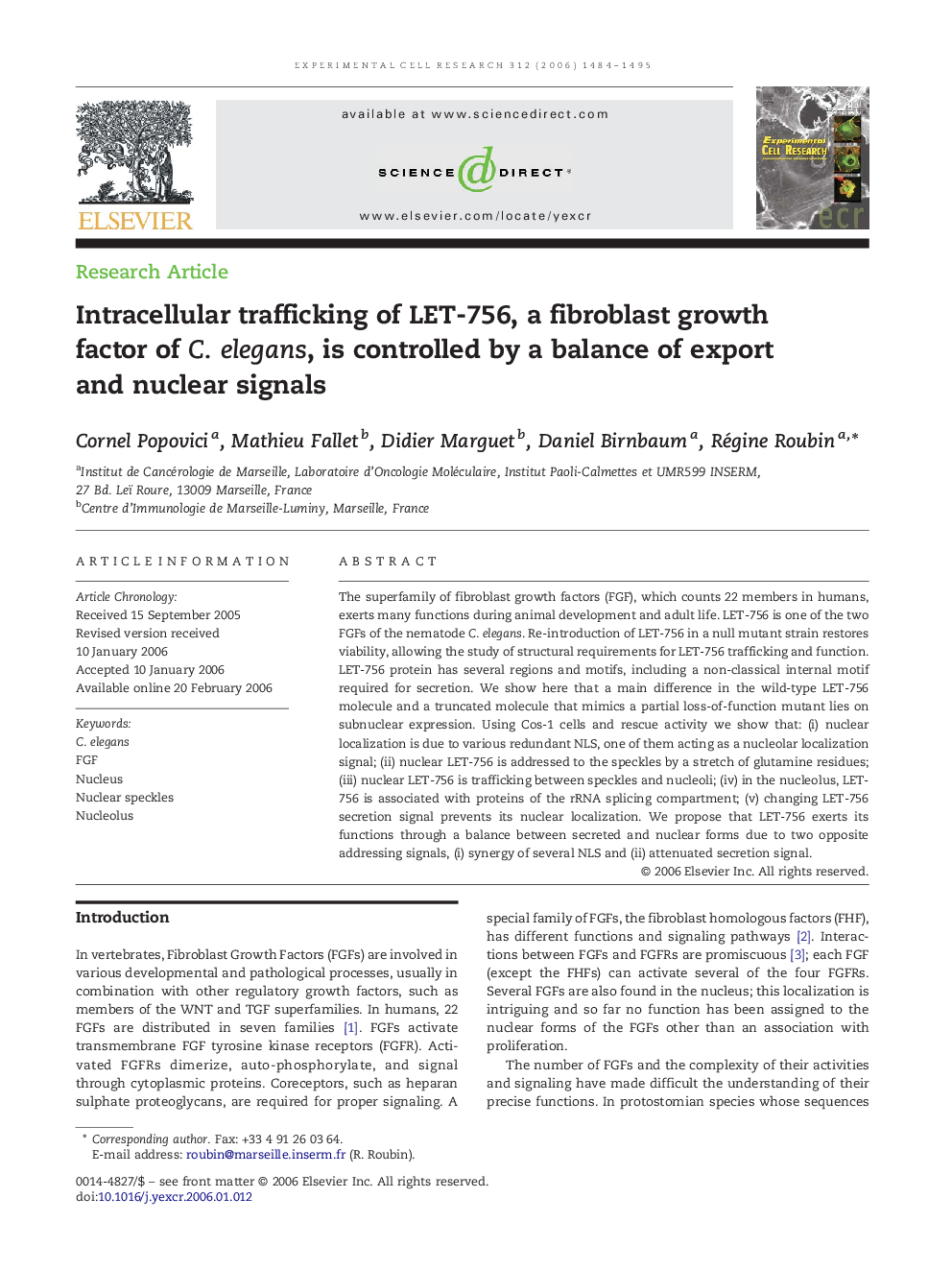| Article ID | Journal | Published Year | Pages | File Type |
|---|---|---|---|---|
| 2132920 | Experimental Cell Research | 2006 | 12 Pages |
The superfamily of fibroblast growth factors (FGF), which counts 22 members in humans, exerts many functions during animal development and adult life. LET-756 is one of the two FGFs of the nematode C. elegans. Re-introduction of LET-756 in a null mutant strain restores viability, allowing the study of structural requirements for LET-756 trafficking and function. LET-756 protein has several regions and motifs, including a non-classical internal motif required for secretion. We show here that a main difference in the wild-type LET-756 molecule and a truncated molecule that mimics a partial loss-of-function mutant lies on subnuclear expression. Using Cos-1 cells and rescue activity we show that: (i) nuclear localization is due to various redundant NLS, one of them acting as a nucleolar localization signal; (ii) nuclear LET-756 is addressed to the speckles by a stretch of glutamine residues; (iii) nuclear LET-756 is trafficking between speckles and nucleoli; (iv) in the nucleolus, LET-756 is associated with proteins of the rRNA splicing compartment; (v) changing LET-756 secretion signal prevents its nuclear localization. We propose that LET-756 exerts its functions through a balance between secreted and nuclear forms due to two opposite addressing signals, (i) synergy of several NLS and (ii) attenuated secretion signal.
